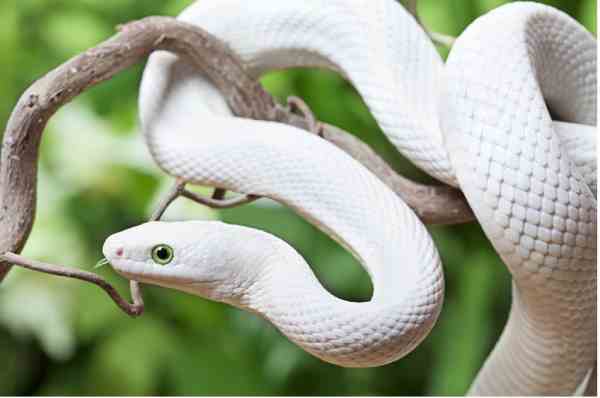When we think of Japan, we often envision a peaceful and serene country, with orderly streets and polite citizens. And that is indeed true, as Japan is considered one of the safest countries in the world, with Tokyo being one of the safest cities.
Table of Contents
However, if you venture into the wilds of this beautiful island nation, you may encounter some terrifying creatures. From the freezing north, where bears and foxes roam, to the tropical south, where venomous snakes lurk in the shade, Japan’s diversity in climate attracts an assorted cast of creatures.
There are even stories of giant centipedes called mukade that are capable of causing excruciating pain. However, it’s important to remember that humans are undoubtedly the deadliest animals of all – not just in Japan, but across the globe. Our encroachment on habitats, the black market for exotic meats, and our waste can have devastating effects on ecosystems and the creatures that call them home.
List Of Deadly Animals Living in Japan
1. Bears
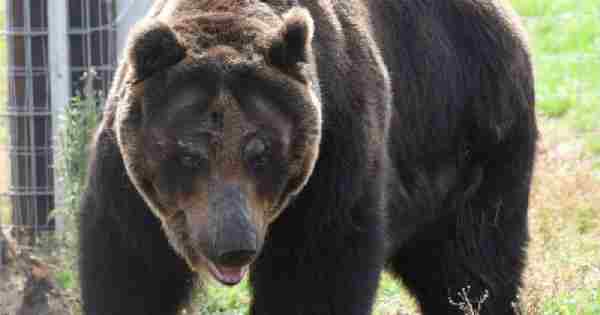
Japan’s wild mammals are impressive creatures. Among the most awe-inspiring are the Ussuri (or Ezo) brown bear and the Asian black bear. It’s easy to be intimidated by these large animals, especially when you consider the ferocity of the Ussuri brown bear. Native to Hokkaido, this bear is known to be the larger and more dangerous of the two, responsible for the deadly 1915 Sankebetsu incident.
Despite attempts to curb their population and protect humans, encounters with bears in Japan continue to occur, particularly in the months before hibernation. While the less aggressive Asian black bear tends to stay in the mountainous regions, villagers in less rural areas may still find themselves coming face to face with these imposing creatures.
Though fascinating to watch from a distance, it’s clear that keeping a safe distance is the best course of action when encountering Japan’s largest wild mammals.
Do:
- Be loud. Wear a bear bell and make your presence known
- If spotted, back away slowly
- If attacked, fall to the ground and protect your head and neck
Don’t:
- Leave garbage and food around
- Go off-trail
- If faced with a bear, do not run
2. Wild boars

The inoshishi, or Japanese wild boar, may look harmless at first, with its old man whiskers and diminutive size. However, don’t let its unassuming appearance fool you. Local folklore, as well as first-hand accounts, paint a brutal picture of cunning porcine demons that wield impressive bravery, strength, and speed.
Hunters revere these animals, but even they don’t dare to catch them unawares, as it can lead to fatal injury or an amok. The inoshishi can be found in all hilly areas in Japan, except for Hokkaido. But with a recent surge in boar sightings closer to towns, you might just come across one on a hike or in your own backyard.
Do:
- Move slowly
- Get high (Their little legs aren’t made for climbing)
Don’t:
- Approach or provoke them (Don’t expect Hakuna Matata)
- Run (They are faster than you)
3. Pufferfish
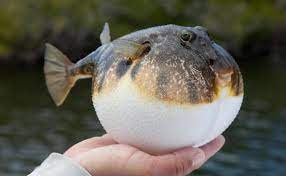
The thought of eating something that could potentially kill you may not sound appealing to most, but for some, the thrill of trying high-risk delicacies is worth it. Enter the fugu, or pufferfish, a notorious fish found in sushi restaurants that, if consumed incorrectly, can lead to paralysis and eventual death.
The toxin tetrodotoxin found in the fish’s body requires a skilled chef to slice the fish with precision. However, with a pass rate of only around 50% to become a fugu chef, the risk may not be worth it to some. Imagine ordering a delicious sushi roll only to end up in the hospital with your stomach pumped. While the fugu may be a delicacy in some regions of Japan, the potential consequences of consuming it are not appealing to everyone.
Do:
- Go to a certified restaurant
- Eat fugu that is reared poison-free
Don’t:
- Take your chances on fugu with unknown sources
4. Viper box jellyfish
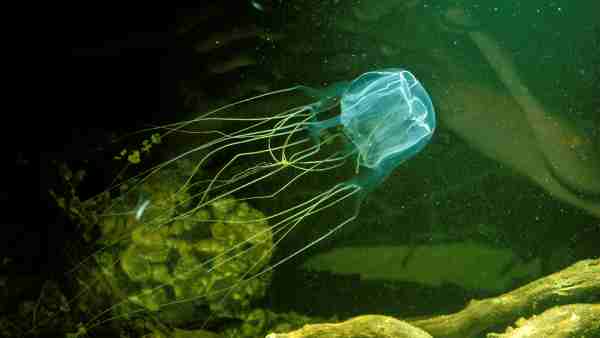
The crystal clear waters of Okinawa are a dream for any beach-loving tourist, but during jellyfish season, the dangers of the ocean become all too real. The habu-kurage, also known as the viper box jellyfish, is a particularly fearsome creature that lurks in these waters from July to September.
Its tentacles, rife with harpoon-like stingers, make it a force to be reckoned with. Even the slightest touch from these deadly appendages can cause intense pain, shock, and cardiac arrest. And if you think that’s bad, the Portuguese man-of-war, known for its dramatic name, is not technically a jellyfish but can also pack a potent sting.
Do:
- Swim at a beach with safety nets
- Contact a lifeguard or call 118
- Apply vinegar to the wound (for habu-kurage only)
- Wear long sleeves or a rash guard
Don’t:
- Rub the infected area
- Panic
5. Snakes

Japan is home to many snakes, but not all of them are friendly. In fact, there are a few varieties that you should avoid at all costs. The habu, yamakagashi, and mamushi are the main culprits, and if you see one of these slithering into your bedroom at night, you should run in the opposite direction.
The Okinawanan habu, in particular, is a formidable foe, as its venom is hemotoxic, which means it can quickly spread throughout the body, causing significant damage to cells and tissue. While there is an antidote available, it’s still better not to take any chances. Make sure to lock your doors tightly at night because one of these snakes won’t think twice about entering your home in search of prey.
Finding one of these in your home will have you heading for the hills (and the boars).
Japan is home to some of the world’s most venomous snakes, and among them are the yamakagashi, the mamushi, and the habu. Of the three, the yamakagashi is relatively docile, preferring to elude predators rather than confront them head-on. While only nine people have been bitten in the last 14 years, it’s still best not to agitate this equally venomous serpent.
The mamushi, however, is the most dangerous of the three, and thousands of people fall prey to its lethal bite each year, with a 1% fatality rate. These deadly creatures are found all over Japan, excluding the Ryukyu Islands. Alarming as it may be, it’s also worth noting that thousands of snakes are submerged, often while they are still alive, in awamori alcohol every year to produce habushu. It’s an inhumane practice that sometimes leads to the snakes putting up a fight.
Do:
- Avoid tall grass and known hotspots
- Go immediately to a hospital if bitten
Don’t:
- Approach
- Try to suck out the venom (it’s only cool in movies)
- Drink habushu (snake wine)
6. Giant ‘murder’ hornets

The name says it all. These insects are called murder hornets for a reason. And if you’re thinking that their lethal reputation is just a myth, think again. In Japan, where they’re known as suzumebachi or “sparrow insect,” these hornets are responsible for claiming the lives of up to 50 people every year. While their venomous sting may be harmless enough in small doses, it can be deadly if the victim is stung repeatedly.
And if that’s not bad enough, encountering a swarm of these winged beasts could turn out to be a horrifying experience. So, if you notice a sparrow-like wingspan gliding over a low mountain or through a forest while hiking, the best thing to do is to steer clear and give them their space.
Do:
- Use protective screens in your home
- If you find a nest, call the authorities
- Stay calm and move away slowly
- If stung, clean the wound immediately
Don’t:
- Make loud noises
7. Redback spiders

These eight-legged creatures are causing quite a stir in Japan. This invasion of kumo spiders from Australia has turned the once-peaceful country into a hotbed of alarming sightings. Their distinctive blood-red backs have been spotted in Tokyo and beyond, striking fear into the hearts of many. Though there have been no reported fatalities, the venom from these spiders can cause intense sweating, headaches, and muscular pain.
Luckily, there is an antivenom available. But the fear of encountering one of these creepy crawlers in your own home has many residents running for safety, and perhaps even for the hills where they might find refuge among the local boars. The invasion shows just how quickly and unexpectedly an invasive species can take hold, and how important it is to be vigilant against such threats.
Do:
- Apply ice to the bite
- Seek medical aid
Don’t:
- Touch them
8. Ticks
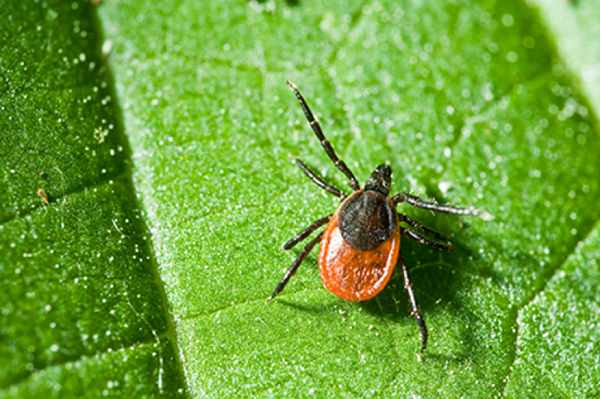
Ticks may seem small and unassuming, but they can be some of the deadliest insects out there. These tiny parasites hitch rides on wild animals and domestic pets and can spread deadly viruses like Lyme disease to humans. In Japan, deer ticks – or sika-dani – have become a growing concern, as they carry viruses like the Yezo virus and Japanese spotted fever, which can be fatal if left untreated.
Even more concerning is the emergence of a new life-threatening disease called severe fever with thrombocytopenia syndrome, or SFTS. With its high mortality rate of around 30%, healthcare workers are keeping a close eye on SFTS, especially in Japan where a record number of cases were reported in 2019. For the elderly population, the symptoms of SFTS – including fever and diarrhea – can be especially dangerous.
Do:
- Avoid tick-infested areas
- Wear long sleeves and pants
- Use repellent
- After a walk, check your pets and yourself for ticks
Don’t:
- Pry the tick off if it is firmly attached
FAQs
What is Japan’s deadliest animal?
In Japan, the Asian giant hornet (Vespa mandarinia japonica) is often considered one of the deadliest animals due to its potent venom and aggressive behavior.
Are there any deadly animals in Japan?
Japan is home to several potentially deadly animals, though fatal encounters are rare due to modern medical care and awareness. Notable examples include the Asian giant hornet with its potent venom, the Japanese giant salamander with its toxic skin secretions, the venomous Japanese pit viper snake, the Japanese redback spider with its painful bites, and ocean-dwelling threats like the box jellyfish and venomous sea snakes.
Does Japan have mountain lions?
No, Japan does not have mountain lions. Mountain lions, also known as cougars or pumas, are native to the Americas and are not found in Japan or any other part of Asia.
Final Words
Within Japan’s diverse landscapes, several potentially lethal animals reside, though fatal encounters remain infrequent due to advanced medical care and heightened public awareness. Among these creatures, notable examples include the Asian giant hornet, distinguished by its potent venom and aggressive behavior, the Japanese giant salamander exuding toxic skin secretions, and the venomous Japanese pit viper snake.
Moreover, the Japanese redback spider, box jellyfish, and venomous sea snakes present in its aquatic realms entail certain risks. While these organisms demand caution, Japan’s sophisticated medical infrastructure and educational initiatives combine to diminish the probability of deadly occurrences, ensuring a generally secure coexistence with these species.
Reference:
- https://www.worldatlas.com/articles/10-deadliest-animals-in-japan.html
- https://novum-terram.fandom.com/wiki/Japanese_cougar_(SciiFii)
- https://golookexplore.com/dangerous-animals-in-japan/

Zahra Makda
Growing up enjoying the beauty of my village, a good passion for nature developed in me from childhood. Following my passion for the natural world, I have chosen zoology for my graduation, during my undergraduate degree, I participated in many nature trails, bird watching, rescues, training for wildlife conservation, workshop, and seminars on biodiversity. I have a keen interest in invertebrate biology, herpetology, and ornithology. Primary interests include studies on taxonomy, ecology, habitat and behavior.

